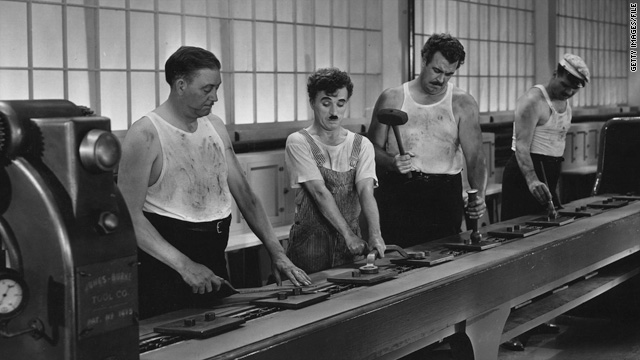I have to admit that I don’t like going shopping, so I leave it mostly to my wife. If I have to go to a store, I want to finish this exercise as quickly as possible, as … I find it boring.
The biggest frustration I have is when my wife sends me to a supermarket, and suddenly I realize that they changed location of aisles with specific products. This is most probably one of the very few occasions when you can hear me swearing, and where I pray for standardization. Standardization makes our lives so much easier and efficient.
So now I have to navigate through the aisles and shelves, still swearing, trying to find what I have on my list. But guess what. Sometimes, unexpectedly I get lost in an unknown aisle and find some new ethnic produce that I have never tried. Since I am a risk taker, quite often I discover a new food that extends my cooking abilities and menu horizon (which mostly, but not always, is pleasing to my wife and kids).
This is actually a great example of benefits and limitations of standardization versus experimentation.
Standardization allows us to be more efficient and faster in the Cynefin framework parlor - simple or complicated processes. In this case finding a standard product that I have used in the past, and which my wife put on the list, is way easier and faster. However the cost of this efficiency is a loss of creativity. While being focused on collecting what I need, I mostly miss the discovery part.
Henri Fayol and Henry Ford mastered the standardization and repeatability of processes to perfection. But again, manufacturing of widgets or cars belongs to simple (T-Model) or complicated domains (Tesla).
When it comes to innovation however, this stops working. Rigidity of processes and penalizing those who try to break them, negatively impacts our ability to find new solutions to existing problems.
So here are two ways to win in the market. One is to be more efficient than competitors, the other is to find a better solution but at the cost of initial speed of delivery. The problem with the former is that you can optimize the process only to certain level after which, you will plateau. You can be efficient only to a point. Although initially you might win over the competitors, eventually they are going to catch up. The optimization of the process has its limits.
On the other hand, innovation brings intellectual property into the picture, that cannot be easily replicated. Yes, the competitors will eventually catch up where you are right now, but it will take them much longer (think Porter’s strategies). As a matter of fact, if you continue innovating, your competitors will always try to catch up, and will always be behind. Innovation doesn’t have limit, it doesn’t have plateau, as long as you keep inflow of new ideas.
But there is another problem with innovating - it doesn’t guarantee success. As a matter of fact more that 90% of ideas are not going to work, and most probably will be waste of time. So the effectiveness disappears in a puff of smoke.
However, it is the 10% of those ideas that make difference, and elevate the companies to the top. This is not just linear growth, but rather exponential rocket launch pad.
Thus, both approaches have advantages and failings.
Which one is better?
As a consultant would say - ‘it depends’.
It depends on ‘personality’ and culture of your organization, risk tolerance, desperation to succeed. This is the reason why start-ups are more innovative (they have nothing to lose), while well established companies are more cautious and focus more on efficiency and process improvement by standardization (middle management tries to limit the risks). But then many established companies survive, while 90% of startups fail.
I believe that the best approach, rather than trying to standardize, is to provide guardrails. Guardrails would define when you should standardize, while still keeping open options for projects and products that are just a hypothesis. Both approaches are viable, but which side of the spectrum you want to be, will depend on what you are trying to achieve.
In organization that I work - WorkSafeBC, we decided exactly to do this - find balance. A few years back we created a Common Engineering (Ce) team whose responsibility is to enable our engineering community to collaborate and agree on best practices that then become set of guardrails for our teams. A team can select one of the standards within the portfolio, but without locking them down to a particular way of solving a problem. The teams can still come up with different, innovative solution, which could be added to our portfolio library or pattern for re-usability. Common Engineering team is a custodian of these guardrails, providing information about existing standards, and at the same time enabling teams to on-board new best practices. We use few instruments for this, that are facilitated by Ce.
Centers of Enablement (CoE) These are small (5-9 people), cross functional, long living groups that provide overall governance and direction to a specific function. They meet frequently, facilitating development of best practices and standards through Communities of Practice (CoPs) and Working Groups (WGs).
Communities of Practice (CoP) CoPs are larger groups of people with common interests, but the membership is not fixed. They focus on providing feedback to practices proposed by CoEs and suggesting new solutions. Creativity and feedback through diversity of opinions and experiences.
Working Groups (WG) These are temporary, fixed membership groups called to solve a specific problem. They are small, focused, and as soon as problem is solved, they disband and reform with new members to address next problem in the priority backlog.
If you would ask me about advice which way to go, this would be my answer.
There is no right or wrong way. It is a spectrum, as every organization is different, and different levels of standardization, consistency or innovation might be needed. I have to admit that personally I am inclined to be rather on innovation side (the discovered products in the ethnic foods stay with me for life, while my wife’s list is just once off thing, that I will forget the minute I leave the supermarket).
So here is the set of questions that we should ask ourselves:
-
are we in regulated industry and need to conform to specific audit requirements? If so, standardization and gated processes are better choice.
-
how innovative we want to be? If innovation is our primary goal, we will want to leave as much freedom to the teams as possible
-
are we working on a product that nobody did before? Again, you will want to experiment with as little constraints as possible (your company’s survival could depend on it after all)
-
how new the technology is that we are intending to use? If it is new, we want to experiment and innovate
-
how difficult it will be to maintain the product in the future? If this is our concern, we will want to standardize more
-
how easy is to acquire talent with needed skills? Again, if it is difficult to find skilled resources, moving towards standardization might be the right answer
-
how complicated the product is going to be? The more complicated integration will be, the more we want to standardize in order to balance the speed.
The bottom line is that the choice is yours. As I mentioned earlier, my personal preference is to be on the innovation side, but due to the role at my organization, I need to carefully evaluate options and find balance, before providing recommendations (here comes the servant leadership part). I hope that the set of questions above can help with the decision. Good luck!
And by the way, we always look for innovative, inspiring people who push boundaries. If you are one of them, please reach out to me.




